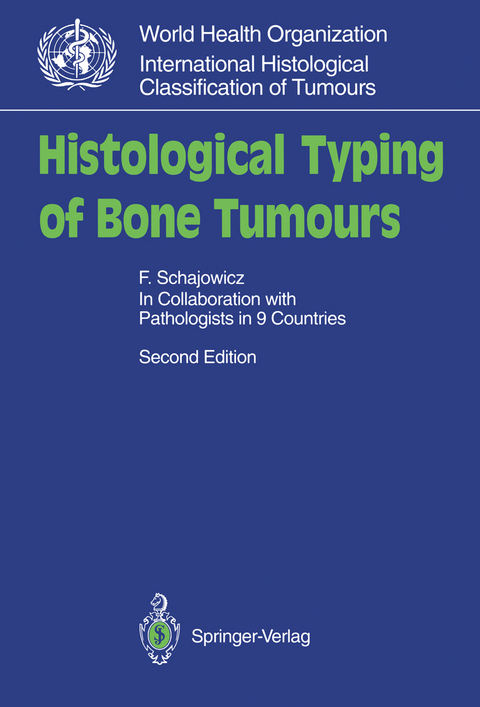Histological Typing of Bone Tumours
Seiten
1993
|
2nd ed.
Springer Berlin (Verlag)
978-3-540-56460-7 (ISBN)
Springer Berlin (Verlag)
978-3-540-56460-7 (ISBN)
In Collaboration with Pathologists in 9 Countries
During the two decades since the publication of the first edition of Histological Typing of Bone Tumours, new methods of diagnosis, es pecially radiological imaging techniques (computed tomography and magnetic resonance imaging), associated with advances in the new cytomorphological methods including immunohistochemistry, DNA ploidy analysis, cytogenetic chromosomal investigation, etc., have greatly improved our diagnostic tools and treatment results. These advances are reflected by the publication of new editions of various important textbooks in recent years. In these publications classifica tion criteria differed. In contrast, the WHO classification has been relatively unaltered, and has introduced a limited number of new entities and subdivided others because of distinct histological features and biological be haviour. In general the framework and the concept of the original classifi cation, as it has been widely accepted, remains essentially unchanged. The classification is based on the line of histological differentiation, in many instances reflecting the type of intercellular matrix material produced. This approach is justified because it avoids theoretical his togenetic controversies.
During the two decades since the publication of the first edition of Histological Typing of Bone Tumours, new methods of diagnosis, es pecially radiological imaging techniques (computed tomography and magnetic resonance imaging), associated with advances in the new cytomorphological methods including immunohistochemistry, DNA ploidy analysis, cytogenetic chromosomal investigation, etc., have greatly improved our diagnostic tools and treatment results. These advances are reflected by the publication of new editions of various important textbooks in recent years. In these publications classifica tion criteria differed. In contrast, the WHO classification has been relatively unaltered, and has introduced a limited number of new entities and subdivided others because of distinct histological features and biological be haviour. In general the framework and the concept of the original classifi cation, as it has been widely accepted, remains essentially unchanged. The classification is based on the line of histological differentiation, in many instances reflecting the type of intercellular matrix material produced. This approach is justified because it avoids theoretical his togenetic controversies.
Histological Classification of Bone Tumours.- Definitions and Explanatory Notes.- Bone-Forming Tumours.- Cartilage-Forming Tumours.- Giant-Cell Tumour.- Marrow Tumours.- Vascular Tumours.- Other Connective Tissue Tumours.- Other Tumours.- Unclassified Tumours.- Tumour-like Lesions.- Illustrations.
| Erscheint lt. Verlag | 15.11.1993 |
|---|---|
| Reihe/Serie | WHO. World Health Organization. International Histological Classification of Tumours |
| Zusatzinfo | XII, 130 p. 103 illus. |
| Verlagsort | Berlin |
| Sprache | englisch |
| Maße | 170 x 242 mm |
| Gewicht | 345 g |
| Themenwelt | Medizinische Fachgebiete ► Chirurgie ► Unfallchirurgie / Orthopädie |
| Medizin / Pharmazie ► Medizinische Fachgebiete ► Onkologie | |
| Studium ► 1. Studienabschnitt (Vorklinik) ► Histologie / Embryologie | |
| Studium ► 2. Studienabschnitt (Klinik) ► Pathologie | |
| Schlagworte | Bone • Bone tumours • Cartilage • classification • Klassifikation • Knochensarkom • Knochentumor • Knochentumore • osteosarcoma • Sarcomas • Sarkom • tissue • Tumor |
| ISBN-10 | 3-540-56460-8 / 3540564608 |
| ISBN-13 | 978-3-540-56460-7 / 9783540564607 |
| Zustand | Neuware |
| Haben Sie eine Frage zum Produkt? |
Mehr entdecken
aus dem Bereich
aus dem Bereich
Buch | Softcover (2023)
Urban & Fischer in Elsevier (Verlag)
CHF 85,40
für Studium und Praxis unter Berücksichtigung des …
Buch | Softcover (2022)
Medizinische Vlgs- u. Inform.-Dienste (Verlag)
CHF 39,20




